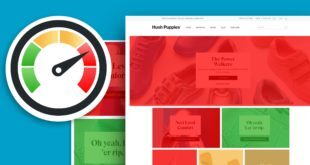 If you’ve done even rudimentary research into search engine optimization you know that keyword selection and usage plays a massive role in the success of a campaign. You’ve probably encountered the basic rules of engagement – keep keyword density between 1 to 2%, target keywords that aren’t too competitive, and place keywords evenly throughout the content of an article. However, there is so much more involved in performing keyword analysis and making continual adjustments to content development efforts in order to facilitate the most effective keyword usage. Consider the following four steps to optimizing keyword analysis and usage:
If you’ve done even rudimentary research into search engine optimization you know that keyword selection and usage plays a massive role in the success of a campaign. You’ve probably encountered the basic rules of engagement – keep keyword density between 1 to 2%, target keywords that aren’t too competitive, and place keywords evenly throughout the content of an article. However, there is so much more involved in performing keyword analysis and making continual adjustments to content development efforts in order to facilitate the most effective keyword usage. Consider the following four steps to optimizing keyword analysis and usage:
- Brainstorm for Base Keywords/Phrases – Become the Visitor
Start by using the most valuable resource available (your brain) to step inside the mind of a visitor and answer a few questions:
What would a visitor be searching for that could lead them to a page on my site?
What would the visitor want to gain from landing on this page?
What related topics might this visitor be interested in?
By simply answering the above three questions you can formulate base keywords/phrases that would fit well into article titles and sub headers. The first step in any successful campaign is preparing a solid outline for your content development efforts by putting yourself in the visitor’s perspective.
- Utilize External Resources and Input for More Ideas
 Once you’ve compiled a list of base keywords you can expound upon your selections by asking for opinions from friends, family, and other people within your network. It’s also a good idea to use a thesaurus to find synonyms for all of your base keywords, in order to broaden your understanding of how people will be searching for your content. Once you’re satisfied with a rough draft of the keyword list, wait 24 hours and then re-examine it to see if any new ideas arise. Sometimes taking a little bit of time to clear a project from your mind and then revisiting the challenge gives you the insight needed to acquire a boost in creativity.
Once you’ve compiled a list of base keywords you can expound upon your selections by asking for opinions from friends, family, and other people within your network. It’s also a good idea to use a thesaurus to find synonyms for all of your base keywords, in order to broaden your understanding of how people will be searching for your content. Once you’re satisfied with a rough draft of the keyword list, wait 24 hours and then re-examine it to see if any new ideas arise. Sometimes taking a little bit of time to clear a project from your mind and then revisiting the challenge gives you the insight needed to acquire a boost in creativity.
- Analyze Search Volume/Competition Level for Your Selected Keywords
Now that you have a formidable keyword list you should begin conducting analysis using online applications like the Google keyword tool. The main attributes you’re looking for are search volume (the amount of queries that contain a specific keyword on a monthly basis) and search competition level (the number of search results that appear when a keyword is inputted into the search engine). Ideally, you’ll want to start by developing content that targets keywords which are commonly searched for (have a high search volume) yet not commonly written about (have a low search competition level). An additional benefit of using online keyword analysis applications is that many of them provide “like terms” or “similar keyword” suggestions that can help you further broaden your list.
- Use Web Analytics to Gauge Progress and Fine-Tune Efforts
 After you’ve built a massive keyword list, and have chosen the most ideal keywords to begin pursuing initially, it’s time to start developing/publishing content and monitoring progress using web analytics. Your hosting account provides a number of applications that allow you to view various statistics pertaining to visitor behavior. The most important stats to examine are pages visit times, bounce ratio, and referrers. Advanced tools will allow you to see which keywords a user typed into the search engine to arrive at a specific page. If you’re running a marketing campaign (i.e. – PPC) you should be able to discover which keywords are bringing the most commercial success based on conversion rates on particular pages.
After you’ve built a massive keyword list, and have chosen the most ideal keywords to begin pursuing initially, it’s time to start developing/publishing content and monitoring progress using web analytics. Your hosting account provides a number of applications that allow you to view various statistics pertaining to visitor behavior. The most important stats to examine are pages visit times, bounce ratio, and referrers. Advanced tools will allow you to see which keywords a user typed into the search engine to arrive at a specific page. If you’re running a marketing campaign (i.e. – PPC) you should be able to discover which keywords are bringing the most commercial success based on conversion rates on particular pages.
 Cheapest Linux VPS Home for Cheap Virtual Private Server
Cheapest Linux VPS Home for Cheap Virtual Private Server 
